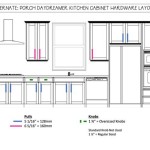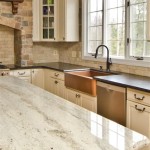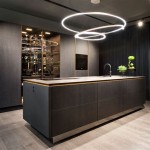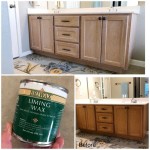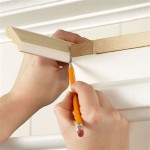Illuminate Your Culinary Haven: A Guide to Kitchen Cabinet Lights Inside
Kitchen cabinet lighting serves both a functional and aesthetic purpose. Proper illumination within cabinets enhances visibility, making it easier to locate items and perform tasks. It also adds a touch of elegance and sophistication, elevating the overall kitchen design.
Types of Kitchen Cabinet Lighting
Various lighting options cater to different needs and preferences. Choosing the right type depends on factors such as cabinet size, budget, and desired aesthetic.
*
Puck Lights:
These compact disc-shaped lights offer focused illumination, ideal for highlighting specific areas within cabinets. Battery-operated options provide easy installation without wiring. *Strip Lights:
LED strip lights offer versatile placement options, allowing for under-cabinet, in-cabinet, and even within-drawer illumination. They create a seamless, continuous light source. *Linear Lights:
Similar to strip lights, linear lights offer a sleek, modern look. They are available in varying lengths to suit different cabinet dimensions. *Shelf Lighting:
Dedicated shelf lighting illuminates each shelf individually, maximizing visibility and creating a visually appealing display. *Rope Lights:
Flexible rope lights can be easily contoured to fit any cabinet shape, offering a soft, diffused glow.Factors to Consider When Choosing Cabinet Lighting
Careful consideration of these factors ensures the selected lighting meets specific requirements and complements the overall kitchen design.
*
Cabinet Size and Layout:
The dimensions and layout of the cabinets dictate the type and number of lights needed for optimal illumination. *Desired Brightness:
The purpose of the lighting – task lighting or ambient lighting – determines the required brightness levels. *Color Temperature:
Warm white creates a cozy ambiance, while cool white provides a brighter, more task-oriented light. Consider the overall kitchen color scheme when selecting color temperature. *Power Source:
Decide between hardwired options for a permanent solution or battery-operated lights for easier installation and flexibility. *Budget:
Lighting options range in price, allowing for choices that fit varying budgets.Installation Methods for Kitchen Cabinet Lighting
Installing cabinet lighting can range from simple DIY projects to more complex installations requiring professional assistance. Choosing the right method depends on the type of lighting and individual skill level.
*
Plug-in Systems:
These systems require an available outlet and are the easiest to install. *Hardwired Systems:
Hardwired lights offer a more integrated look but require electrical expertise for proper installation. *Battery-Operated Lights:
These offer the simplest installation, often involving adhesive backing or clips.Benefits of Installing Kitchen Cabinet Lighting
The advantages of incorporating cabinet lighting extend beyond mere aesthetics. It enhances functionality and adds value to the kitchen space.
*
Improved Visibility:
Proper lighting eliminates dark corners and makes locating items easier. *Enhanced Aesthetics:
Cabinet lighting adds a touch of elegance and sophistication, creating a visually appealing kitchen. *Increased Safety:
Adequate lighting minimizes the risk of accidents caused by poor visibility. *Task Lighting:
Focused light sources make food preparation and other kitchen tasks easier and more efficient. *Ambient Lighting:
Cabinet lighting can contribute to the overall ambient lighting in the kitchen, creating a warm and inviting atmosphere.Maintaining Your Kitchen Cabinet Lights
Proper maintenance ensures the longevity and optimal performance of cabinet lighting.
*
Regular Cleaning:
Dust and grime can accumulate on light fixtures, reducing their effectiveness. Regularly cleaning the lights ensures optimal brightness. *Bulb Replacement:
Replace burnt-out bulbs promptly to maintain adequate lighting levels. *Wiring Checks (For Hardwired Systems):
Periodically check wiring for any damage or loose connections to prevent electrical hazards.Energy Efficiency and Kitchen Cabinet Lighting
Choosing energy-efficient lighting options reduces energy consumption and lowers electricity bills. LED lights are a popular choice for their energy-saving properties.
*
LED Technology:
LED lights consume significantly less energy than traditional incandescent bulbs, making them a cost-effective and environmentally friendly choice. *Motion Sensors:
Incorporating motion sensors automatically turns lights on and off, further reducing energy consumption. *Dimmers:
Dimmers allow for adjustable light levels, providing flexibility and energy savings.Placement Strategies for Optimal Illumination
Strategic placement of lights maximizes their effectiveness and enhances the overall aesthetic.
*
Under-Cabinet Lighting:
Positioning lights under cabinets provides task lighting for countertops, enhancing visibility during food preparation. *Inside Cabinet Lighting:
Illuminating the interior of cabinets makes finding items easier, particularly in deep or corner cabinets. *Above Cabinet Lighting:
Installing lights above cabinets adds a layer of ambient lighting, creating a warm and inviting atmosphere.
Inside Glass Cabinet Lighting How To Installing

30 Cabinet Lighting Light Types For Kitchen Bathroom More

Kitchen Cabinet Lighting Ideas For Your Home Design Cafe

Inside Cabinet Lighting Modern Kitchen Houston By Gb General Contractors Houzz

How Important Is Kitchen Cabinet Lighting

How To Light A Kitchen Lightology

Cabinet Lighting Spillers Kitchens

How Important Is Kitchen Cabinet Lighting

Under Cabinet Lighting For A Magical Touch In Your Kitchen L Shaped Designs Remodel Trends

How To Buy Under Cabinet Lighting Ideas Advice Lamps Plus
Related Posts

